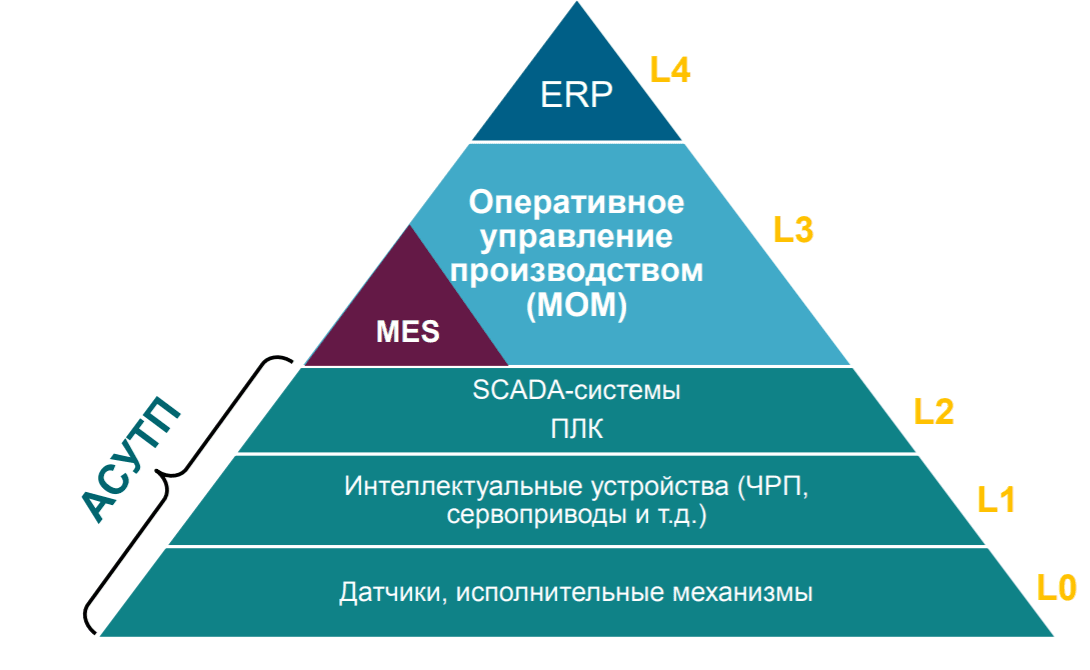Introduction
- Introduction to the concept of automation in business
- The Importance of Choosing the Right Level of Automation
Level 1: Manual Control
At the manual management level, business processes are performed manually with minimal use of automated systems. Employees perform most operations using traditional methods such as paper documents, phone calls, and email. In this mode, automated tools are either absent or limited.
Advantages
- Ease of implementation: at this level there is no need for complex technological solutions or expensive equipment.
- Flexibility: Manual control allows you to quickly adapt to changes and business requirements.
- Low cost: No need for automation reduces initial costs.
Flaws
- Low productivity: Manual processes typically take longer and are prone to human error.
- Limited scalability: As your business grows, manual management can become ineffective and difficult to scale.
- Security Risks: The lack of automated systems can increase the risk of errors and data leaks.
How to determine if this level is right for your company
- Low Volume Operations: If your company currently performs a limited number of business processes, manual management may be an acceptable option.
- Limited budget: If your company is limited in financial resources and cannot afford to implement expensive automated systems, manual management may be a temporary solution.
- Low need for responsiveness: If your business does not require fast data processing and timely decisions, manual management may be an acceptable option.
However, it is important to remember that manual control may be a temporary solution, and as the company grows further, it may be necessary to move to a higher level of automation to ensure efficiency and competitiveness.
Level 2: Automation Basics
At the basic automation level, a company begins implementing basic automated systems and tools to optimize business processes. This may include the use of simple software applications, spreadsheets, databases, or online tools for task and project management.

Advantages
- Increased productivity: Automated systems help reduce task completion time and improve overall productivity.
- Improved accuracy: Automation reduces the likelihood of human error and increases the accuracy of task completion.
- Better data organization: Basic automated systems allow for more efficient data management and storage, making information easier to access.
Flaws
- Limited capabilities: Basic automated systems may be limited in functionality and may not be able to fully meet a company's needs.
- Need for staff training: Implementing new systems requires time and resources to train employees.
- Additional costs: Implementing even basic automated systems may require additional financial costs for purchasing and updating software.
How to determine if this level is right for your company
- Business Growth: If your company is starting to grow and requires more efficient ways to manage business processes, automation basics may be a helpful next step.
- Increased efficiency: If your company is struggling with efficiency issues in performing day-to-day tasks, automation can help improve the situation.
- Increasing data volume: If your company deals with large volumes of data, automation can help manage and analyze it more efficiently.
A foundational level of automation is often the first step towards creating a more efficient and competitive business model.
Level 3: Partial automation
Partial automation is a more advanced level than basic automation and involves more complex systems and processes. At this level, a company uses automated systems to optimize key aspects of the business, such as production, inventory, finance, marketing, or sales management. This may involve the use of specialized software products or the integration of multiple systems to automate a wide range of processes.

Advantages
- Improved efficiency: Partial automation helps optimize business processes by speeding up task completion and reducing errors.
- More capabilities: More sophisticated automation systems allow a company to implement new strategies and work methods to improve results.
- Improved data analysis: Automated systems can provide deeper data analysis, allowing a company to make more informed decisions.
Flaws
- High costs: Partial automation may require significant investments in purchasing and configuring specialized software or hardware.
- Implementation complexity: Implementing complex automation systems can be challenging and require extensive time for staff training and system configuration.
- Support Needs: Maintaining and updating automated systems may also require additional resources and effort.
How to determine if this level is right for your company
- Need to optimize key processes: If your company is facing challenges in managing key aspects of the business, partial automation can help improve the situation.
- Growth Plans: If your company plans to expand its operations or increase production volumes, partial automation can provide the necessary infrastructure to make those plans a reality.
- The need for deeper data analysis: If your company is looking to gain a more detailed understanding of its operations and customer base, partial automation can help.
Level 4: Full automation with human control
At this level, the company fully automates most key business processes, but retains control and the ability for human intervention when necessary. All core operations are performed automatically using specialized software systems, robots, or machine learning, but humans remain as a supervisory element, able to make decisions and intervene in the event of emergency situations or the need for analysis and strategic decisions.

Advantages
- High efficiency: Full automation allows a company to achieve maximum productivity and optimize business processes by automatically performing key operations.
- Reduced human error: Automated systems can reduce the likelihood of human error, improving the quality and reliability of work.
- Faster responses: Automation systems allow a company to respond more quickly to changes in the market or internal factors through automatic data analysis and processing.
Flaws
- High implementation costs: Full automation may require significant investments in specialized technology and staff training.
- Risk of loss of control: Too much automation can lead to loss of control over business processes unless sufficient human management and oversight is provided.
- Difficulty in implementing changes: Changing automated processes can be complex and require time and resources to reconfigure and update.
How to determine if this level is right for your company
- Need for maximum efficiency: If your company strives for maximum productivity and business process optimization, full automation may be the right choice.
- High degree of process automation: If most of the key operations in your company are already automated at previous levels, full automation may be a logical step to further improve productivity.
- Need for flexibility and control: If your company wants to retain the ability to intervene in business processes to make strategic decisions or in emergency situations, full automation with human oversight may be the right option.
Level 5: Full automation without human intervention
At the level of full automation without human intervention, a company completely switches to automated systems that can independently perform all key business processes without the need for human intervention. This includes the use of advanced technologies such as artificial intelligence, machine learning, autonomous robots, and other automated systems capable of analyzing data, making decisions, and acting according to preset algorithms.
Advantages
- Maximum productivity: Automated systems can operate 24/7 without interruption, ensuring maximum efficiency and productivity.
- Cost reduction: Reducing or eliminating human labor reduces labor costs and the risk of human error.
- Rapid response to change: Automated systems can quickly adapt to changes in the market or the company's internal environment and make appropriate decisions.
Flaws
- High implementation costs: Full automation without human intervention may require significant investments in the development and implementation of advanced technologies.
- Technology limitations: Some business processes may be difficult to automate without human intervention due to the limitations of existing technologies.
- Risk of loss of control: Full automation can lead to loss of control over business processes unless sufficient human management and monitoring is provided.
How to determine if this level is right for your company
- High degree of process automation: If most of your company's business processes are already automated at lower levels, full automation without human intervention may be a logical next step to achieve maximum efficiency.
- Need for scalability: If your company is looking to scale its operations without increasing headcount, full automation can help achieve this goal.
- The need to minimize risks: If your company operates in an industry where human error can have serious consequences, full automation can help reduce risk and improve the reliability of business processes.
Conclusion
Selecting the optimal automation level for your company is a key step toward increasing efficiency, reducing costs, and improving operational quality. Understanding the specifics of each of the five automation levels will help you make an informed decision that aligns with your business needs and goals.
You can start with manual control if your company is just starting out or has limited resources for implementing automation. However, as your business grows and your operations increase, you can move on to more advanced levels of automation.
When deciding on the level of automation, consider the following factors:
- Business Goals: Objectively evaluate what level of automation best aligns with your strategic objectives and will achieve your desired results.
- Customer needs: Consider your customers' needs and expectations when choosing the level of automation. Automation should improve service quality and meet the needs of your audience.
- Resources and Budget: Assess your current resources and financial capabilities for implementing automation. Ensure the chosen level of automation aligns with your budget and capabilities.
- Flexibility and scalability: Choose a level of automation that will provide flexibility and the ability to scale your business in the future, taking into account possible changes in market conditions and customer needs.
Regardless of the level of automation chosen, it's important to remember that the automation process shouldn't be static. Continuously evaluate the effectiveness of the implemented systems and be prepared to adapt them to changing conditions and the needs of your business.
Making an informed decision about the level of automation will help your company improve competitiveness, increase efficiency, and ensure long-term success in a changing business world.
Basic and partial automation levels can be an ideal choice for companies looking to optimize their business processes, improve efficiency, and respond flexibly to market changes.
Full automation with human oversight may be the right choice for companies seeking maximum efficiency while still retaining the ability for human intervention to make strategic decisions or in emergency situations.
Finally, full automation without human intervention may be ideal for companies seeking maximum productivity and automation of all key business processes.
It's important to remember that choosing the level of automation should be well-founded and aligned with the specifics of your business, its needs, and its goals. Furthermore, automation is an ongoing process, and your company can evolve to higher levels as it develops and market conditions change.




